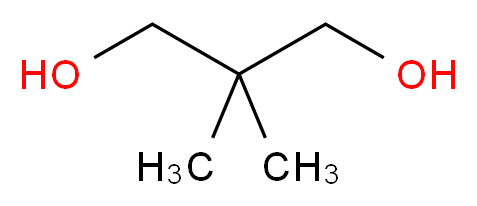Molar mass 104.148 g/mol Boiling point 208 °C | Formula C5H12O2 Melting point 129.1 °C | |
 | ||
Neopentyl glycol (IUPAC name: 2,2-dimethylpropane-1,3-diol) is an organic chemical compound. It is used in the synthesis of polyesters, paints, lubricants, and plasticizers. When used in the manufacture of polyesters, it enhances the stability of the product towards heat, light, and water. By esterification reaction with fatty or carboxylic acids, synthetic lubricating esters with reduced potential for oxidation or hydrolysis, compared to natural esters, can be produced.
Reactions
Neopentyl glycol is synthesized industrially by the aldol reaction of formaldehyde and isobutyraldehyde. This creates the intermediate hydroxypivaldehyde, which can be converted to neopentyl glycol with either excess formaldehyde or catalytic hydrogenation of the aldehyde group to an alcohol group.
It is used as a protecting group for ketones, eg gestodene synthesis.
